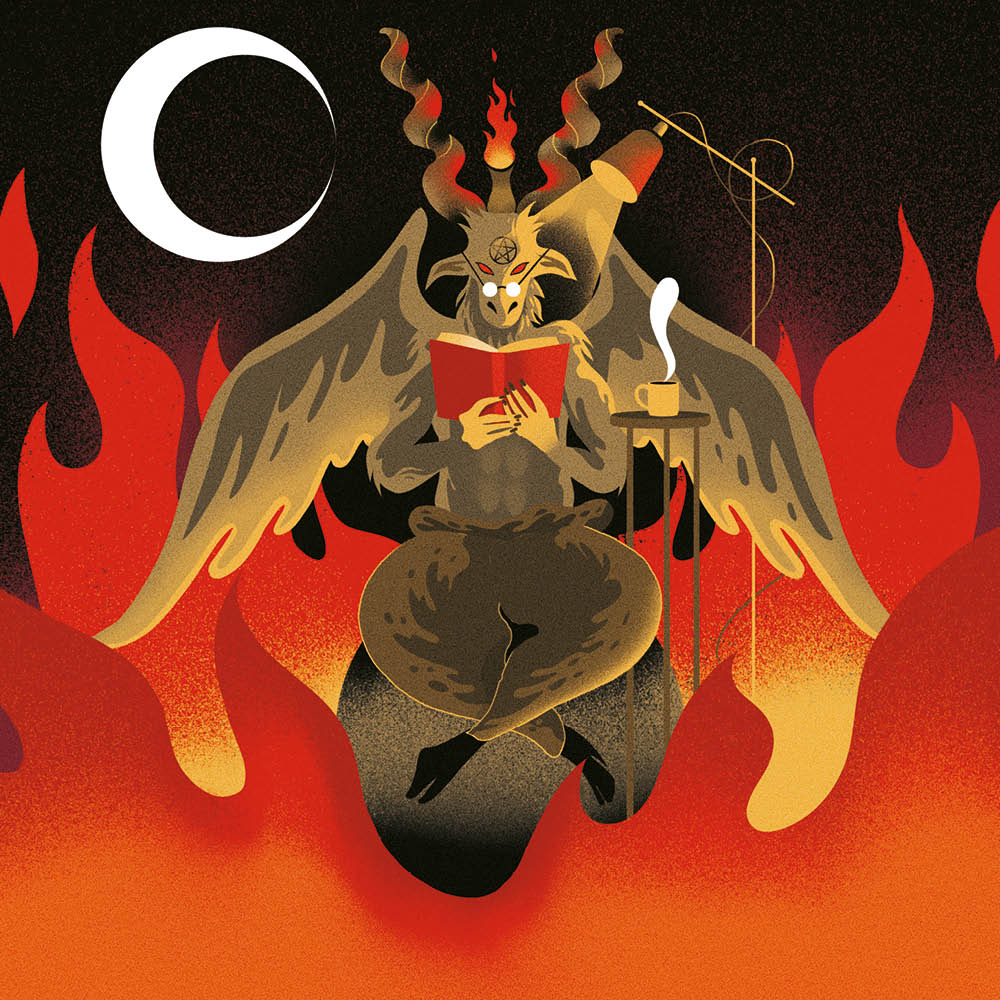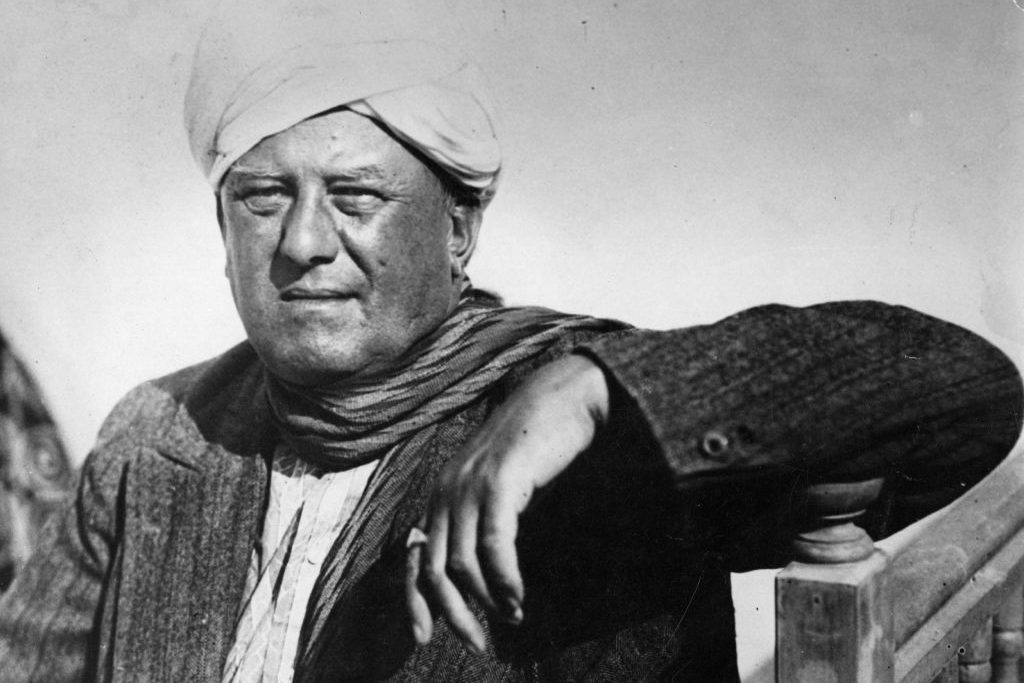When I was offered the chance to review two new books about the Devil, I thought, “what fun!” I wouldn’t describe myself as a particularly diabolical person, but as someone whose deep love of Paradise Lost has made me, as good old William Blake didn’t quite put it, “of the devil’s party while very much knowing it,” I rubbed my hands together in glee at the prospect of getting down and dirty with Old Nick.
Not, you understand, that my purely literary interest can begin to compare to the “Satanic Panic” outbreak that gripped the imaginations of middle America in the late 1980s and 1990s. “Satanic cults! Every hour, every day, their ranks are growing!” So began one typically understated NBC special that boasted macabre stories of animal sacrifice, cannibalism, ritualistic child abuse and grisly ceremonial murders, all described with a mixture of apparent shock and prurient relish. People genuinely feared that agents of the Devil walked among them. Not least because the media whipped them up into a frenzy.
It is easy to look back at Satanic Panic and chuckle at its absurdity. For a brief moment, we might pity the teenage goths and emos who were suspected of unspeakable crimes because they liked the color black. We can do this because, of course, in our enlightened age, nobody really believes in the Devil anymore. Even the camp but hardly blood-curdling flamboyance of the Satanic Temple is somewhat restrained today; its adherents now spend their time rather quaintly fighting for “representation in schools.”
But as Baudelaire once remarked, “the Devil’s loveliest ruse is to persuade you that he doesn’t exist.” If there’s any truth to this, the Prince of Darkness’s infernal smokescreen is working splendidly: last year, according to one Gallup poll, Americans’ belief in the Devil and Hell fell to a record low. Spurred on by a general withdrawal from all things metaphysical, spiritual and numinous, it’s a trend replicated in many countries across the globe. We are diabolo-skeptic — and this may be to the ruin of our immortal souls.
Despite this decline, the Devil remains a recurrent character in our modern vernacular. Take it from President Biden, who, back in 2021, jeered at those who denied wrongdoing over the Capitol Hill riot: “I don’t care if you think I’m Satan reincarnated, the fact is you can’t look at that television and say nothing happened on [January 6].” Or from Trump — veritable poster boy of the odd demonic epithet — who infamously branded Hillary Clinton “the Devil” and recently suggested that the judge in his hush-money trial might “look like an angel” but is really (yet another) “devil.” It is telling that Trump tends to reserve these high-stakes theological insults for his most powerful opponents. Lesser challengers are merely “meatball” or “birdbrain.” Of course, there’s no better realm within which the Devil still has sway than politics. As the seventeenth-century dramatist John Webster so eloquently put it, “a politician is the Devil’s quilted anvil.”
So, among all this hyperbole and hysteria, how do we recognize the real manifestation of evil in the world? Two new books set out to answer this question and prove that it is a timely one.
Raymond Sullivan’s The Devil’s Best Trick does so via an eclectic mix of genres. It is part historical-research essay on the evolution of the idea of the Devil across the Abrahamic religions, part true-crime thriller and part high-stakes travel journalism, detailing the author’s journey to a jungle south of Veracruz, Mexico to witness the “Hour of the Witches,” an annual ritual in which supplicants ask favors of El Diablo. Unsurprisingly, this means that it often reads like three books rolled into one. But for those who can endure it, the choppy structure actually works to Sullivan’s advantage, giving a sense of evil as a ubiquitous force, not bound by time, space or literary format.
Sullivan undeniably excels at covering a great deal of diabolic territory in a relatively short amount of space. Not only does he expertly guide us through the early theological debates on the problem of evil, nimbly shifting from the pre-Socratic philosophers to the likes of Augustine and Aquinas, Diderot and Hume, but he also confronts those who were “of the Devil’s party” in real life. From fifteenth-century witch-hunters to the Marquis de Sade and contemporary serial killers such as Lawrence Bittaker and Roy Norris and Westley Allan Dodd, there’s no deficit of diabolical characters, so much so that at times it feels sickening to read.
This is precisely the visceral reaction Sullivan hopes for, since his central thesis is that the Devil is not simply a trivial “symbol” (or political catchphrase) but is an “actuality.” The Devil is real, a figure he can see “most clearly, strutting amid the words and thoughts and deeds of us all, arms outstretched in triumph.” Given the cumulative and at times highly distressing evidence of real-world tragedy Sullivan compiles, it is hard not to concede that we downplay the reality of evil in the world at our own peril.
There are excesses here, as in one particularly unbelievable episode in which Sullivan receives a threatening note daring him to “throw open the door” the Devil “hides behind.” Whether this is from an actual Satanic vassal or a simple nutjob, we can only guess. Nevertheless, Sullivan has undoubtedly persuaded himself that a visible evil is at large in the universe, a thing both material and immaterial. What’s more, he doesn’t even care if we buy his story. Having survived the occult ritual in Catemaco, Mexico — in which a goat was sacrificed before his eyes while “blatantly sexualized” young virgins in turn carried chickens to a brujo, a dark witch, for slaughter — Sullivan states bluntly: “this wasn’t that the Devil existed. It was that I believed the Devil existed.” His conviction is chillingly persuasive.
Those unwilling to take Satan so literally can often get behind the idea that the image of his diabolical covenants still has currency today. This is Ed Simon’s stated view in his wide-ranging new history of the Faustian bargain, Devil’s Contract.
The tale of Faust — most familiar to us via Marlowe’s and Goethe’s dramas — is iconic: the intemperate necromancer sells his soul to Satan in exchange for knowledge and power. Within this context, Devil’s Contract covers both old and new ground. As a reference guide, it is deep and well-researched. Readers are treated to the babble of medieval incantations supposed to summon Satan himself and to absorbing descriptions of infernal art by the likes of Michelangelo, Delacroix and, of course, Luis Ricardo Falero, whose “Witches Going to Their Sabbath” of 1878 is surely one of the strangest — and most sexualized — paintings ever created.
Yet Simon is not content to present the reader with a selection of old-school diabolical pacts. Instead, the writer and academic seeks out new ways of imagining the Faustian in the spheres of technological and environmental change. In other words, he says, we are now exposed to “Mephistopheles in the guise of a computer, a locomotive, an atom bomb.”
In fact, Simon commits his own impish act in exposing his readers to the most chilling Faustian bargain of the internet age: the thought experiment called Roko’s Basilisk. In this case, ignorance really is bliss since simply reading about the theory is a form of epistemological entrapment. (Look away now!) The experiment, summarized briefly, envisions an omnipotent yet also malevolent artificial intelligence that will enact revenge on all those who know about its possible existence and yet fail to help bring it into being.
Simon is quick to dismiss its creator, screen-named Roko, as a quack on a forum, but should he? As he points out himself, digital Faustian bargains are happening all around us. Google, Apple, Amazon, Meta and Twitter have all “taken the time to write down our names, forever saved on the contract stored in the servers.” In the world of big tech, we sign daily contracts with the Terms of Service gods without a second thought to how we might be imprisoning our souls. In return, we get free WiFi in our local shopping mall for a few moments.
Simon’s wisecrack about recasting the Anthropocene as the “Fausticene” is unlikely to catch on. His sardonically preachy assertions that capitalism is “the most disastrous ideology in history” and that our “rapacious hunger” will result in “apocalypse” are likewise a tad fire-and-brimstone. But the idea that “Faust’s story is all of ours” — even now — is compelling. The Devil doesn’t need to be recontextualized or brought into the modern, technological world. It would seem he’s already here. We’re reminded of Mephistopheles’ glee that “Hell hath no limits, nor is circumscribed / In one self-place; for where we are is hell, / And where hell is, there must we ever be.”
Both these works seek to impress a more profound reckoning on their readers than mere entertainment. Indeed, The Devil’s Best Trick and Devil’s Contract take their place in the noble tradition of diabolic investigation, in fiction and in fact. In 1942, C.S. Lewis had his instructive demon Screwtape declare that when humans amuse themselves, “flippancy is best of all” because, being “a thousand miles away from joy, it deadens, instead of sharpening, the intellect.” The Devil’s Best Trick and Devil’s Contract are best viewed as cautions against flippancy when it comes to the diabolical. Whatever the polls say about belief in Satan in our own age, the abiding message of these two books is that Baudelaire was correct — and that the Devil, very much present, has pulled off quite the coup.
This article was originally published in The Spectator’s August 2024 World edition.























Leave a Reply